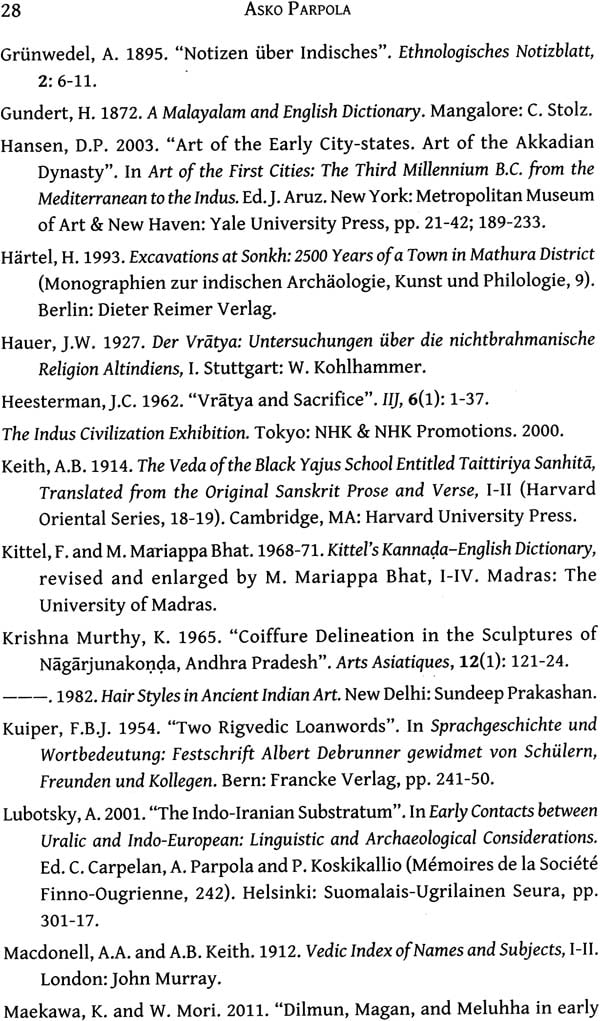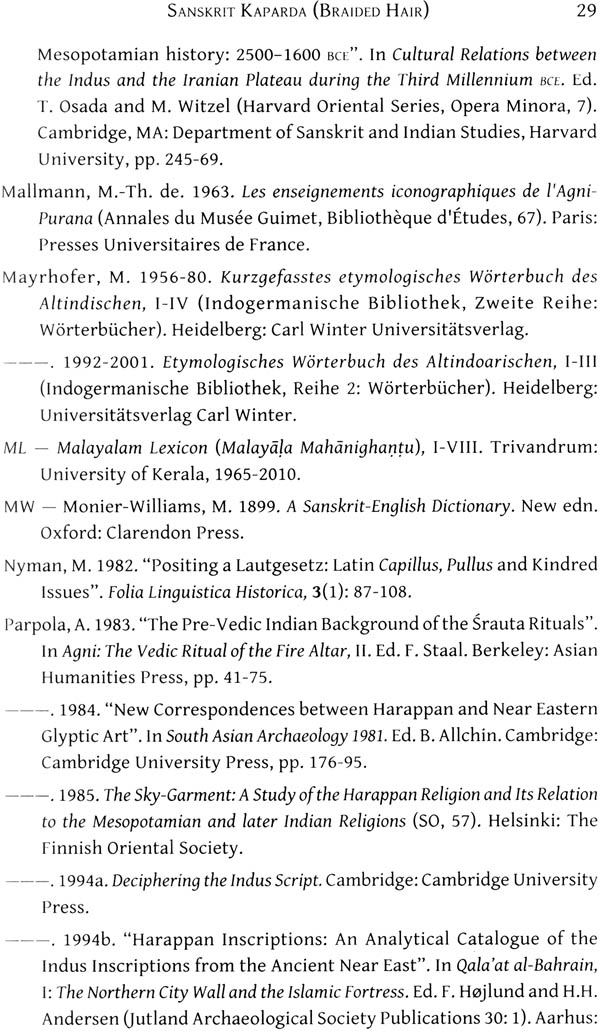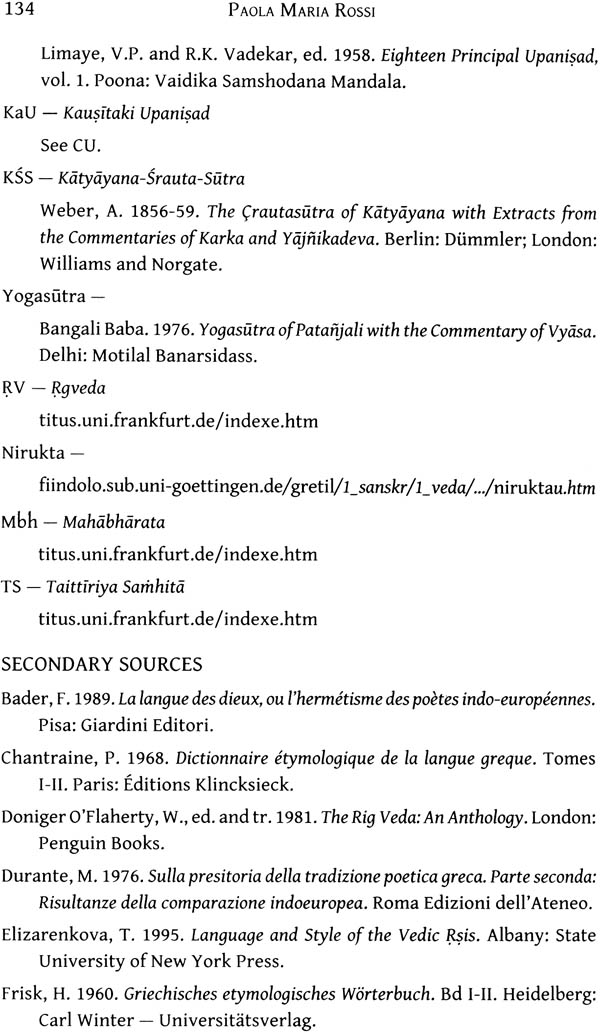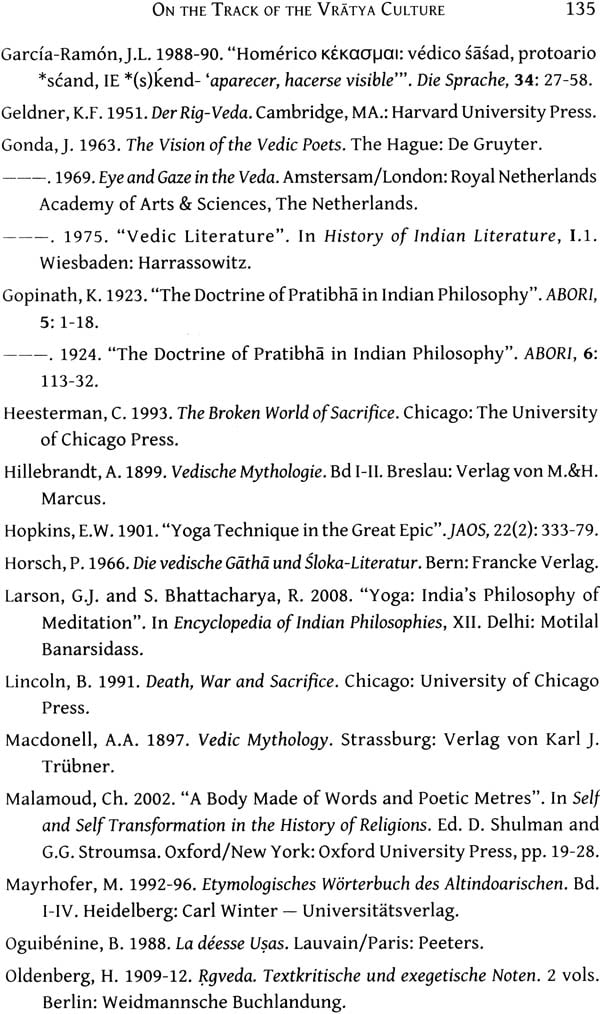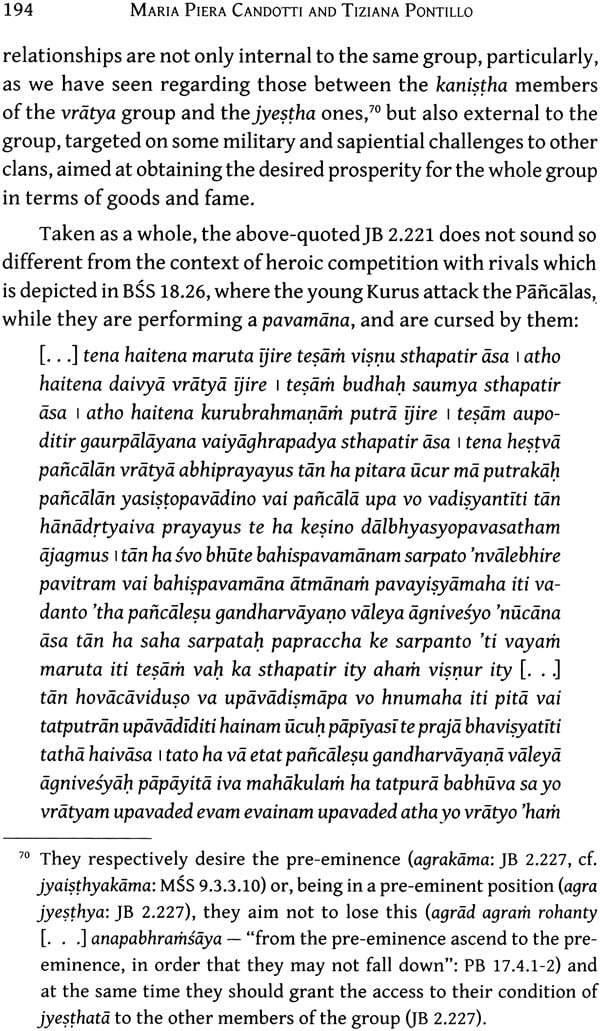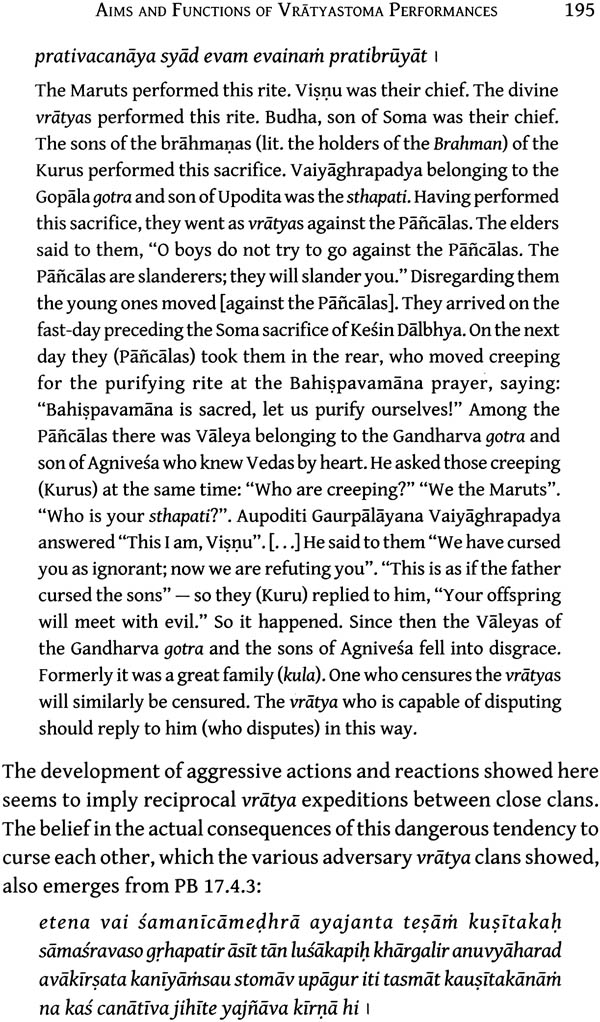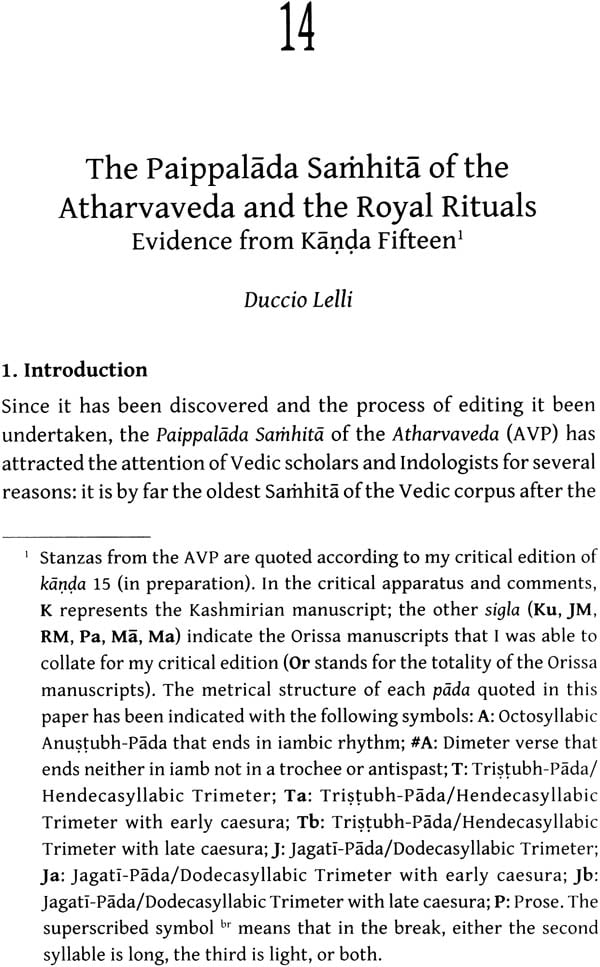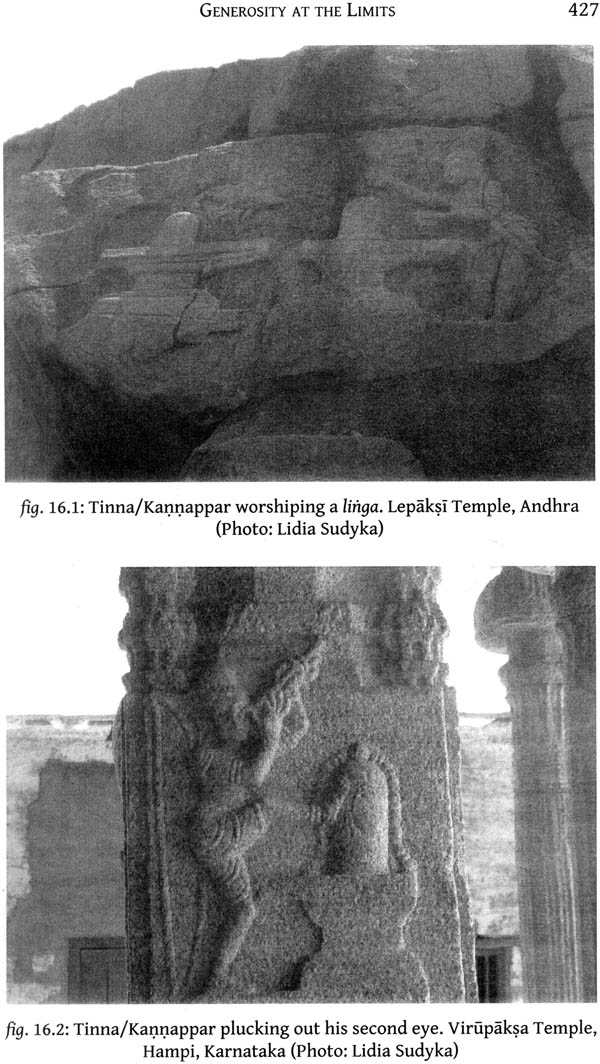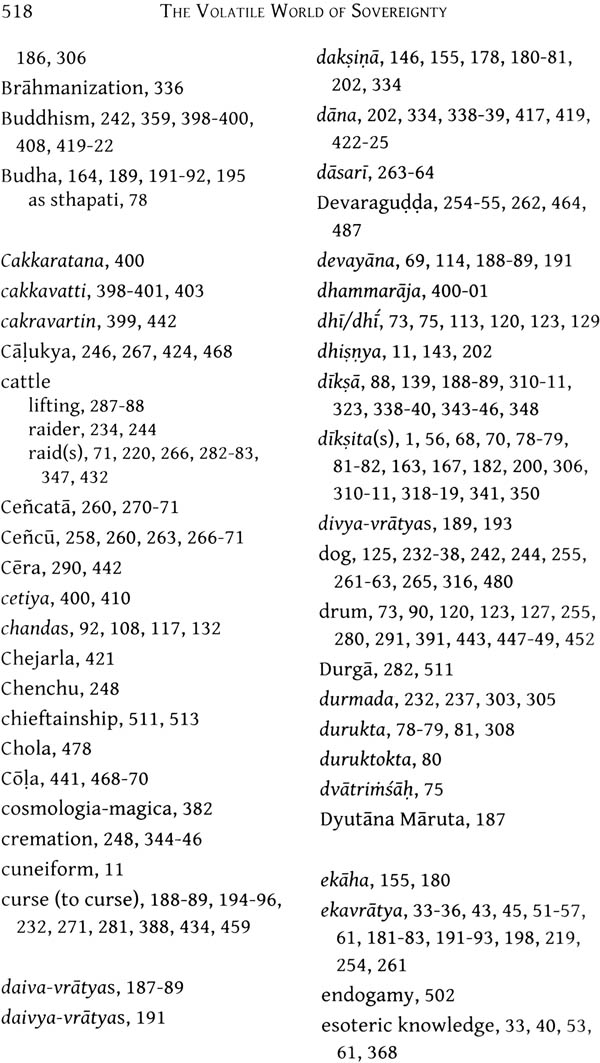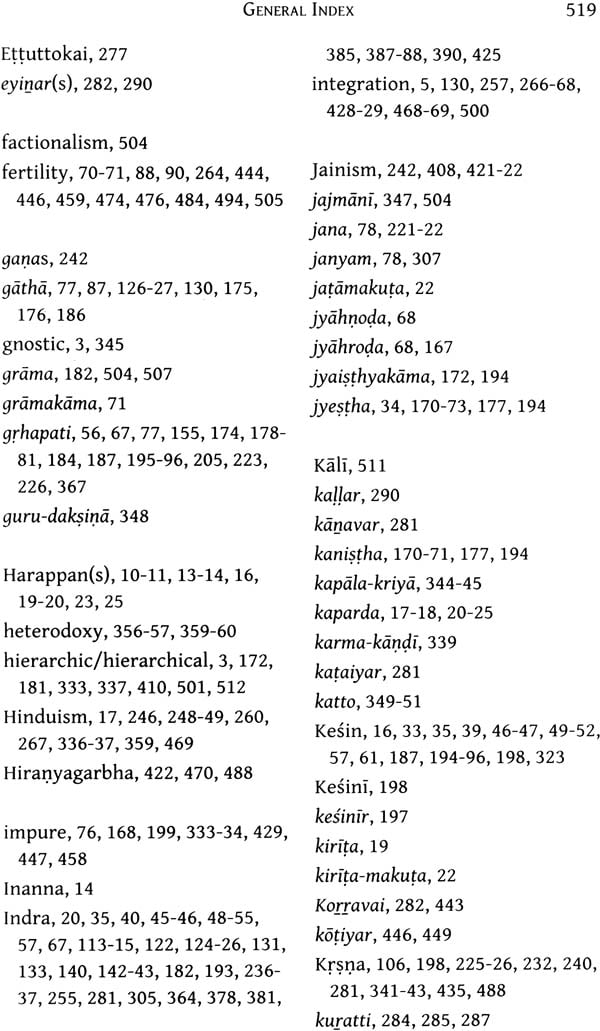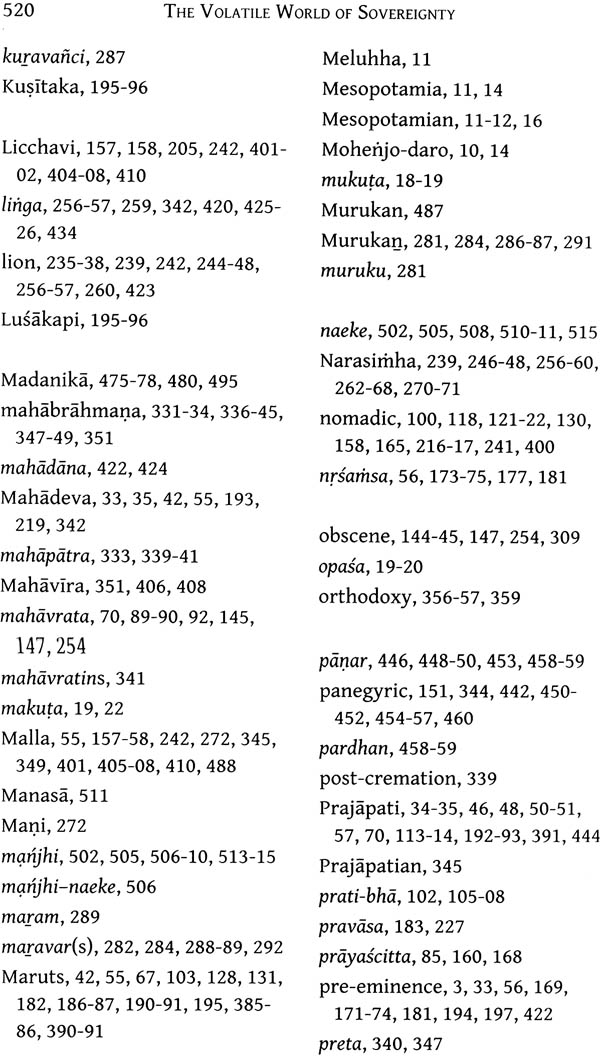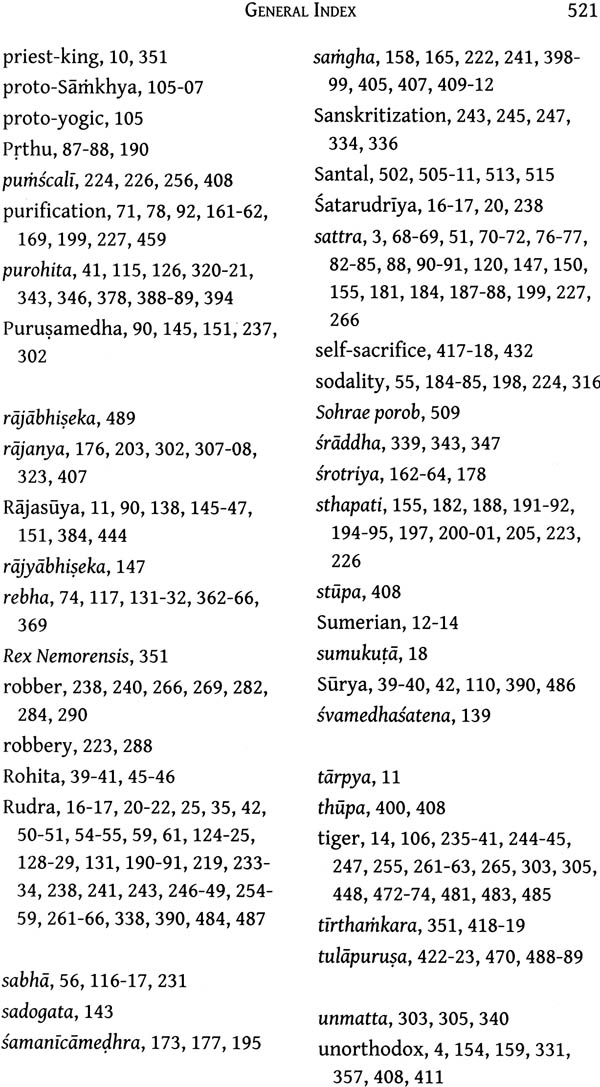
The Volatile World of Sovereignty (The Vratya Problem and Kingship in South Asia)
Book Specification
| Item Code: | NAK747 |
| Author: | M. Monier Williams |
| Publisher: | Parimal Publication Pvt. Ltd. |
| Language: | English |
| Edition: | 2021 |
| ISBN: | 9788171106226 |
| Pages: | 1260 |
| Cover: | Hardcover |
| Other Details | 11.0 inch X 9.0 inch |
| Weight | 3.37 kg |
Book Description
This volume stems from the three-year Research Project Traces of a 'Heterodox' Concept of Kingship in Ancient, Medieval and Modern India financed by the "Regione Autonoma della Sardegna", developed by Cristina Bignami, Danila Cinellu, Ewa Debicka-Borek, Moreno Dore, Elena Mucciarelli, Chiara Neri and coordinated by Tiziana Pontillo. It mainly tries to postulate an alternative explanation to the vratya-phenomenon correlated with the heterodox facets of Indian sovereignty. Thus, the work consistently offers a new historical interpretation of the rise of the so- called orthodox Brahmanic (Srauta-) culture that is understood as a "reform". Moreover, it resorts to a large collection of ancient, medieval, and modern texts and documents, interpreted by means of philological and anthropological tools. In this manner, the Vratya problem is launched onto a interdisciplinary platform, in order to profit from a broad scenario as far as this issue is concerned.
The first section focuses on the vrtitya culture, as it can be reconstructed from old (and middle) Indo-Aryan generally marginalized sources, and from medieval and modern documents where this culture seems to have left some traces. The second section seeks to substantiate the polar opposition between orthodox and heterodox sovereignty, of which vrtityas appear to be a capital example.
Tiziana Pontillo is a Senior Lecturer (2002- ) in Sanskrit Language and Literature at the Philology, Literature and Linguistics Department of Cagliari University, Italy. She is the author of more than 80 contributions, among which Rule-Extension Strategies in Ancient India (Frankfurt M.: Peter Lang, 2013), co-authored with Elisa Freschi. She also co-edited with Maria Piera Candotti Signless Signification in Ancient India and Beyond (London: Anthem, 2012).
Cristina Bignami completed her Ph.D. with a study on Medieval Indian Art at the University of Turin. She is a Research Fellow in the project "Kings of the Wild: The Re-use of Local and Vedic Elements in the Legitimation Process of Medieval Karnataka", Tubingen University. Her contributions focus on Indian History of Arts and on the History of Medieval South India.
Moreno Dore is a Research Fellow at the Philology, Literature and Linguistics Department of Cagliari University, Italy. He took his Ph.D. with a thesis on "Vratya Ideology in the Atharvaveda" (University of Turin, 2015). He is the author of several contributions on Vedic topics, often included in the proceedings of international conferences.
Elena Mucciarelli completed her Ph.D. with a study on semantic developments of the Vedic corpus. She is a Research Fellow in "Kudiyattam: Living Sanskrit Theatre in the Kerala Tradition", Jerusalem and Tubingen University. She is also Principal Investigator of "Kings of the Wild: The Re- use of Local and Vedic Elements in the Legitimation Process of Medieval Karnataka", Tubingen University. Her contributions focus on the Vedic period and on ritual and cultural aspects of south India.
This work aims at postulating a fresh proposal for an alternative explanation of the vratya-phenomenon correlated with the heterodox facets of Indian sovereignty. At the same time, the volume offers a new historical reading of the rise of the so-called orthodox Brahmanic (Srauta-) culture as a reform. This is achieved by the utilization of a large collection of ancient and medieval texts and modern documents, interpreted by means of philological and anthropological tools. Thus, the methodology underlining our project mainly relies on a diachronic analysis of the sources, which are often manifestly composed of different layers probably resulting from clear and conscious redactional or re-elaborative enterprises.
Approaching the vratya problem from a broader perspective in the context of other disciplines, such as archaeology, anthropology and art, has proven to be really thought-provoking, especially since it overcomes the limiting, albeit most commonly used strategy, which restricts analysis to Vedic sources. Of course, research design is dictated by whichever historical reconstruction model of Ancient India one is persuaded to follow. In actual fact, if the vratya culture and the orthodox-tradition are instead thought of as a continuum, we can find a couple of works that are currently considered as having already crossed the finishing line of relevant research.
As is well known, Heesterman (e.g. 1962, 1964, 1982, 1985, 1993, 1995, 2012) was the first scholar to postulate the orthogenetic hypothesis in order to explain the derivation of the figure of yajamana from the vrdrya-warrior / ascetic. None the less, since he defined the vratya as being the predecessor of the diksita, there is less need for an in-depth analysis of the peculiarities of a culture, which is probably not quite so different from the orthodox one. Moreover, Falk (1986, 2001, 2002, 2012) has already offered us a detailed description of the general social context of the vratya- phenomenon, inscribing it in the same supposed continuum, although it is restricted to some marginal categories of warriors. His reading became the standard approved interpretation, which is commonly and authoritatively quoted as a reference work, "strictly derived from the evidence of the texts themselves" (Witzel 1989; Hiltebeitel 2001), so that the earliest pioneering monographs, such as Charpentier (1911); Winternitz (1925); Hauer (19Z7); Biswas (1955) and Choudary (1964), were definitively put aside.
Furthermore, we think that the reconstruction of (at least) two different ancient waves of Indo-Aryan speakers - as advanced by Parpola (1983, ZOIZ) - could explain the majority of our results. The most ancient vratya historical stage might actually be assumed as being the cultural expression of a possible ancient wave of Indo- Aryan speakers. This might have been reflected in the hymns of the Kanva and Angiras, poets of Rgveda (mandalas VIII, I, X) and those of Atharvaveda, in the early gathas (Horsch 1966: 11-13,416), and in the later Sanskrit Epics (Brockington 1998: 214; Hiltebeitel 2001: 118-32), as well as being mirrored in the culture emerging in the eastern part of the Indo-Gangetic plain, i.e. in the area called the Greater Magadha by Bronkhorst (Z007). of course, we are well aware that all these texts were probably established later, and indeed under the influence of the following age, but we assume that the lateral areas of the continental Indian territory, such as east and south India, might have proved better at keeping the most ancient culture alive for a long time.
As a consequence, we interpret the Srauta-liturgy - the main referent of all post-Rgvedic texts, albeit not the only one - as the outcome of a clash between different cultural matrices. This might explain the otherwise incomprehensible axial breakthrough highlighted by Heesterman, i.e. the overcoming of a social context where individual abilities, such as bravery and military skills or insightful solving of ritual riddles and poetic improvisation, warranted pre-eminence in the sacrificial arena and as a consequence in society. This could therefore explain why the vratya- institution is treated differently in more or less Brahmanized works, such as Dharmasatras and Atharvaveda respectively.
Moreover, this transition could match with the well-known change from an individual lineage-period, when the political set- up was composed of some fifty smaller tribes in conflict with each other and migrating towards the east, to the time of the Kuru- hegemony (Witzel 1989, 1995), when society started shifting from a segmentary lineage structure to a more hierarchical and stratified one (Kulke 1979; Kulke and Rothermund 1986). The substitution of a variegated landscape of sub-tribes with a new "super-tribe", i.e. that of the Kuru, might thus have been the precise cause of the re-elaboration of different clan-based ritual activities in order to attain a common set of rituals.
We are well conscious that the only available documents are actually a product of the aforementioned cultural clash: none the less, we have aimed at filling a quite small - but, in our opinion, significant - gap within the sources that have been studied till now. Indeed, one of the volume's main targets has been to widen the list of the so-called "vratya-sources", by including some Vedic passages which - to the best of our knowledge - have never been included in previous works. On the other hand, we have tried to re-interpret the standard repertory of sources used by scholars in their research on Vratyas and to tentatively recover the speculative, religious, and poetic imagery of their apparently ascetic and gnostic non-Brahmanic pattern. In fact, a new and fresh interpretation has been given to a number of texts, such as several underrated speculative hymns of Atharvaveda beyond Book 15, and some neglected late Vedic passages on, for example, sattra-rituals or Jaiminiya Brahmana 2.221-26 (which to the best of our knowledge has never been entirely translated before now).
This actually prompts further investigation of Heesterman's supposed correlation between the vratya background and the apparently heterodox features of the earlier competitive system of sovereignty. The vratya brotherhood might originally have been a temporary institution common to all, whose aim was to manage conflicts and govern the distribution of goods, in the context of a somewhat horizontally founded leadership. None the less, these warriors were marginalized and labelled as vratyas in the Brahmanic tradition, while their ascetic way of life was somehow retrieved as a mere stage of existence. On the other hand, their choice is extolled (Atharvaveda 15) and even proposed as a permanent option in Upanisadic and non-orthodox ideologies. In particular we have attempted to reinterpret the apparent marginalization of vratyas and their rites, by assuming a sort of damnatio memoriae of their habits in a distinct period. We advance the hypothesis that Falk's (1986) reconstruction might have been inscribed in a second diachronic phase which could have been contemporary with the rise of the so-called "Brahmanical" society, when the varna-system was rigidly fixed as a hereditary institution.
This historical approach was a crucial deciding factor in our choice to try and provide a description of the development of the vratya culture over a wider time-span. Precisely on the basis of the list of features of the vratya-culture derived from the analysis of the relevant Vedic and late-Vedic sources (Sect. 1), our research also aimed at singling out its possible legacy in more recent times, from the Middle Ages onwards (Sect. 2). Therefore, an important contribution to the general theory which encompasses all the contributions in this volume depends on the programme of extending our inquiries to the whole history of India, to verify if these unorthodox elements re-occur, as suggested by, for example, Sontheimer (1984, 1986), with regard to Karnataka. At several historical junctures, mostly in the so-called "lateral" areas of India, the presence of a multi-centred political system and the warlike formation of small (locally rooted) kingdoms required a legitimation procrss for the role of chief, which involved not only Vedic royal rituals, such as the Asvamedha, but also integration process that seemed to restore some vratya-oriented social dynamics.
| Acknowledgement | ix | |
| List of Abbreviations | xi | |
| List of Illustration | xiii | |
| Summary of Papers | xv | |
| Introduction | 1 | |
| Section 1: | The Vratya Problem | |
| 1 | Sanskrit Kaparda (Braided Hair): Yet Another Harappan Symbol of Royalty Surviving in Vedic "Vratya Rituals" | 10 |
| 2 | The Ekavratya, Indra and the Sun | 33 |
| 3 | Lost Speech: The Poetry of Sattrins | 65 |
| 4 | On the Track of the Vratya Culture: Vedic Poets and Poetry Between the "Visionary Mode and "Auditive Mode | 99 |
| 5 | The Broken World of Sovereignty with Special Reference to the Horse Sacrifice (Asvamedha), etc. in the Vedic and Later Literature | 138 |
| 6 | Aims and Functions of Vratyastoma Performances: A Historical Appraisal | 154 |
| 7 | Vratya "Running Expeditions" (dhavayanti) | 216 |
| 8 | Animal Symbolism of Warrior Brotherhoods in Indian Epic, History and Culture | 231 |
| 9 | Why Did Narasimha Descend to the Earth? Some Cases from Andhra | 254 |
| 10 | Select Old Tamil Tribal Groups: Basic Characteristics in the Context of Ancient India | 275 |
| 11 | The "Implied Leader" and the Vedic Discourse on Sovereignty: Rethinking the Exclusion of the Vratyas from Social Intercourse in the Framework of the Reading Process | 300 |
| 12 | Discriminated Gods: An Annotated Survey on the Case Study of the Mahabrahmana | 331 |
| Section 2: | Non-Orthodox Elements of Indian Sovereignty | |
| 13 | Orthodoxy in the Rgveda? | 356 |
| 14 | The Paippalada Samhita of the Atharvaveda and the Royal Rituals: Evidence from Kanda Fifteen | 376 |
| 15 | Reflections on the Concept of Kingship and on the Presence of the Vratya Tradition in the Pali Canon | 397 |
| 16 | Generosity at the Limits: The King Sibi Story and Its Versions in the Historical and Cultural Context of Andhra and Tamil Nadu | 416 |
| 17 | Sovereignty of Tamil Kings and Tamil Poetic Tradition | 441 |
| 18 | Belur, The Royal Tirtha of the Hoysala Dynasty: The "Miscellanea" of Local Elements Contained in a Sacred Place | 464 |
| 19 | Schism, Ritual and Power: Supremacy and Antagonism in Bengal Rural Contexts | 499 |
| General Index | 517 | |
| Index Locorum | 523 |
